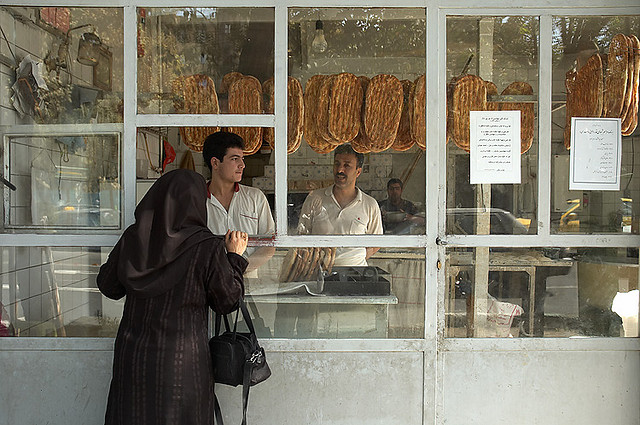Unlock the Magic in Your Story Now
Get the Free 20 questions to Ask Before Launching Your Idea workbook when you sign up for occasional updates.
Get the Free 20 questions to Ask Before Launching Your Idea workbook when you sign up for occasional updates.
How To Get The Results You Want
 In work, as in life we create a sense of balance by understanding what we want and what we don’t.
In work, as in life we create a sense of balance by understanding what we want and what we don’t.
We prioritize by wanting less of one thing and more of something else.
Less overwhelm and more progress. Fewer things to react to and more results.
Less busyness and more time. Fewer restrictions and more choices.
The irony is that we spend a lot our time on things that won’t get us to where we want to go.
We often prioritize the things we say we don’t want to keep doing.
The trick to getting the results you want is to align your actions with the results you want.
Take time to understand where you want to go.
Create the ‘must do’ list that’s going to get you there.
Do more of what’s on the list and less of what’s not.
The last step is a choice that we each have the power to make.
Image by Benjamin Horn.
Share this article
Re-imagining Your Business Growth Mindset
 How is your business going to grow?
How is your business going to grow?
When we think about marketing we are usually thinking about tactics we can use to attract new customers. Our stories are often designed to make people who don’t notice or care to buy or switch. The other way to scale is to retain a customer—to gain both his loyalty and repeat business. This kind of customer becomes an advocate, often referring new customers.
What would the world look like if you spent all of your time, effort and money on delighting the customers you have? Now instead of trying to make your products and services meaningful to more people, you can make things that are meaningful to the people who matter. This way you spend your time doing work that’s worthy of your customer’s time, attention, money, loyalty and love.
7 Questions To Power Your Customer Retention Strategy
1. Who do we matter to?
2. What matters to him?
3. Why does he buy from us?
4. What makes him come back?
5. How does he want to feel?
6. What story could he tell someone to recommend us?
7. How can we improve on that story?
What we don’t know about the people we already know could be more valuable than we think.
Image by Al Hikes AZ.
Share this article
The Value Of Giving To Give
 A supermarket loyalty card helps the company more than it does the shopper. We all know that it’s less a way of rewarding customer loyalty and more a way of collecting useful data. Much of the ‘giving’ we do in business is because some kind of return is expected down the track.
A supermarket loyalty card helps the company more than it does the shopper. We all know that it’s less a way of rewarding customer loyalty and more a way of collecting useful data. Much of the ‘giving’ we do in business is because some kind of return is expected down the track.
This drawing that illustrator Johanna Basford gave away for free on her blog got her a book deal. That book went on to sell a million copies. Her colouring books are at #1 and #2 on the Amazon Bestsellers List (no affiliate link) as we speak. That’s across all books, not just books in her category. How is that possible?
The ROI on real giving is hard to measure, which is why it’s not easy to implement into a hard headed, metrics-driven business strategy, and exactly why it’s worth doing. There is no handy metric for the meaningful—generosity, courage, beauty or love which is why we value them so much.
Just because you can measure it doesn’t mean it mattered.
Image by Oakley Originals.
Share this article
The Awareness Conundrum
 Which is better for your business—more people who know about your brand, or fewer people that it matters to?
Which is better for your business—more people who know about your brand, or fewer people that it matters to?
It’s not hard to make our marketing more urgent with better calls to action, bigger ‘buy now’ buttons or a hundred and one other attention-grabbing tactics that don’t scale. What does scale though is affinity. The magnetic pull a person experiences when they feel like they belong.
Attention and awareness can be fleeting, random and accidental, but affinity if nurtured, endures.
There’s a difference between getting people to notice and getting them to care.
What is your marketing designed to do?
Image by Geraint Rowland.
Share this article
Too Cheap To Be Good
filed in Marketing, Storytelling, Strategy
 When a friend was shopping around for a logo designer she got several recommendations and then asked for quotes. The range was extraordinary, but no more extraordinary than her reaction.
When a friend was shopping around for a logo designer she got several recommendations and then asked for quotes. The range was extraordinary, but no more extraordinary than her reaction.
The companies that quoted below what she felt was reasonable were immediately discounted and they lost her business. They were just too cheap to be good.
Why do we pay more to sit in row F than row Z?
What makes a $10 chocolate bar worth $10?
Why is a ticket to TED worth $8,500 when you can watch all the talks online?
Value is always measured in more than the sticker price. Everything we do is sending a signal to our customers and giving them a story to tell, both to the world and to themselves.
Three questions for you then…
1. What’s the story your prospective customers tell themselves about you?
2. Is it the story you want them to be telling?
3. What do you need to change or amplify to make that happen?
The assumptions we make and the answers we give are not necessarily true—they are stories we (need to) believe.
Image by Rigmarole.
Share this article
How To Tell The Story Of Your Products
filed in Marketing, Storytelling, Strategy
 Why is real estate copywriting so terrible? Maybe it’s not that bad in your town or city, but wherever I have lived the copy seems to serve one purpose—to fill the space between the images and the floor plan in the brochure.
Why is real estate copywriting so terrible? Maybe it’s not that bad in your town or city, but wherever I have lived the copy seems to serve one purpose—to fill the space between the images and the floor plan in the brochure.
Here are a couple of examples of copy written to sell million dollar plus homes.
The Finest Traditions – Attuned To Today
Renovated with a respect for its period origins, defined by a distinctive designer edge, [address] is a stunning Victorian terrace that’s entirely in tune with the contemporary era. Impressive internal proportions that make the utmost of a traditional inner city allotment include refined sitting and dining rooms, each retaining elegant marble mantles around efficient gas Jetmaster fire places. To the rear, northern light and memorable luxury complement a living/dining area accompanied by a kitchen featuring marble and stainless steel surfaces and a walk down wine cellar. Three upstairs bedrooms surrounding a central bathroom provide instant appeal, including a main bedroom with a superb ensuite and evocative original balcony. A sunny tranquil garden of signature [Company] Garden Architecture style creates an ideal conclusion, complemented by rear access to Smith Street, in a great setting close to the best of [names of good suburbs].
And the other.
Designer Style, Definitive Location
Beautifully appointed, this contemporary three-bedroom town residence flows over three levels, situated moments from vibrant [street name] and the beach. Dynamic distribution of natural light fills the stunning whole floor living area including lounge/dining and pristine open-plan kitchen with stone benchtops, and patio doors open to a north-facing entertaining terrace. Neat mezzanine main bedroom with glass-walled ensuite complements two further bedrooms (BIRs), main bathroom, additional powder room and laundry. Sensational internal and external storage, two secure underground parking spaces and polished floorboards complete this modern abode, a short walk from light rail.
What a huge missed opportunity for the entire industry.
Contrast that with these stories from Kit and Ace written to sell an $88 scarf and a $78 t-shirt.
A cashmere hug on a cold day
Like the first sip of soup on a cold day or a warm body curled up beside you under the blankets, surrounding yourself in warmth tops the list of simple pleasures. The Nolita Scarf brings that feeling to your everyday, whether it’s under your jacket, around your neck, or draped across your shoulders, bring cashmere comfort with you wherever you go.
Everyday is like Sunday
You’re out there changing the game Monday – Friday, making the power women of the world proud. When it gets down to the weekend, let this tee take care of the rest. In soft Technical Cashmere and a relaxed fit – it’s a strategic decision you won’t have to run by the board of directors.
Magic. All the measurements and specs come later because they can and should.
A short guide to writing meaningful product descriptions
1. Pay attention to copy that you respond to.
How does it make you feel and why? What makes it great?
2. Understand the story of the person (singular) you’re selling to.
Don’t put a finger to keypad until you can describe a day in her life.
What does she care about most? Write about that first.
3. Speak to one person.
Treat your copy like a conversation rather than a description or a broadcast.
4. Write like people talk.
Nobody uses words like residence or abode any more.
If you wouldn’t say it don’t type it.
5. Help your customer to imagine.
Describe her life after she owns this thing.
Evoke feelings and emotions instead of listing the facts.
6. Simple is better.
Write something that means something.
Avoid jargon, meaningless adjectives and words that you think make you sound good.
The best product descriptions don’t describe the product—they describe the feeling.
There is your customer’s life before the product and her life afterwards.
People don’t buy the thing, they buy the feeling.
Image by Maria Morri.
 Traditional marketing, conceived for an industrial age asks us to believe in the wisdom of the
Traditional marketing, conceived for an industrial age asks us to believe in the wisdom of the  Buying is defined as the acquisition of one thing in exchange for something else. Of course it goes beyond ownership or the trading of things. Buying is an exchange of trust and value—a belief in promises we expect will be kept.
Buying is defined as the acquisition of one thing in exchange for something else. Of course it goes beyond ownership or the trading of things. Buying is an exchange of trust and value—a belief in promises we expect will be kept.
 Have you ever noticed what happens at the organic cafe?
Have you ever noticed what happens at the organic cafe?